Jenny Stevens, a photographer, embarked on an awe-inspiring journey in the remote regions of British Columbia, Canada, which revealed a genuinely astounding discovery. She immortalized an uncommon species of bear known as the spirit bear, also known as the kermode bear, with her camera. These extraordinary creatures have an exceptional white coat due to a unique genetic characteristic, similar to the way that some humans have blue eyes. Join us as we explore this captivating story.
The habitat of the spirit bear, a species of exceptional rarity, is restricted to a small region of British Columbia, Canada. The estimated global population of these bears is approximately 400 individuals. In 2017, the fortunate photographer Jenny Stevens grasped the opportunity to explore the enchanting expanse of the Great Bear Rainforest and capture a mother bear and her cubs with her camera.
Image Credit & More Info: Jenny Stevens
#1:

#2:

#3:

An invitation from a friend to attend a photography workshop in the heart of the Great Bear Rainforest sparked Jenny’s extraordinary journey. A sailboat was chartered for an expedition, providing eight photographers with a canvas for their visual narratives. Their journey traversed the Rainforest’s labyrinth over the course of seven days, with specific stops at Khutze Inlet and Mussel Inlet, where grizzly bears ruled.
#4:
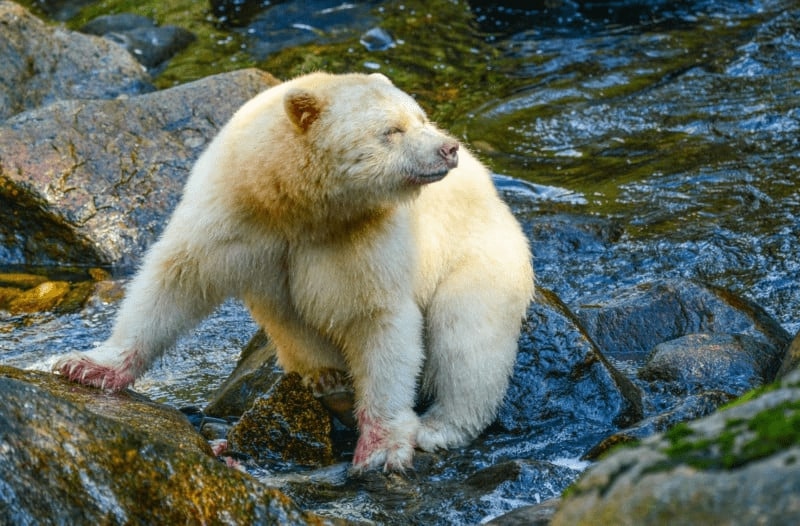
#5:

#6:

The voyage brought them to Gribble Island, a remote location located approximately 400 miles from Vancouver. In addition to scaling the banks of Riordan Creek to gain access to a designated trail, they traversed a mile-long route to reach their destination. Here, they witnessed the awe-inspiring sight of a spirit bear elegantly scavenging for pink salmon along the riverbank amidst the spawning season’s symphony.
#7:
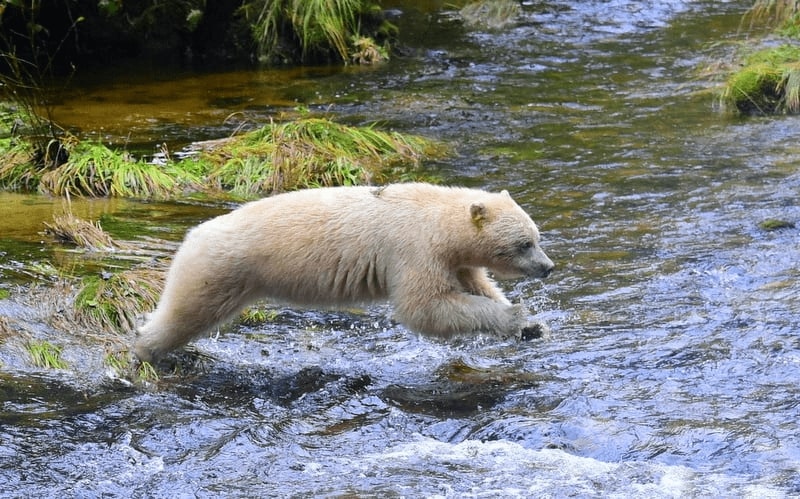
#8:
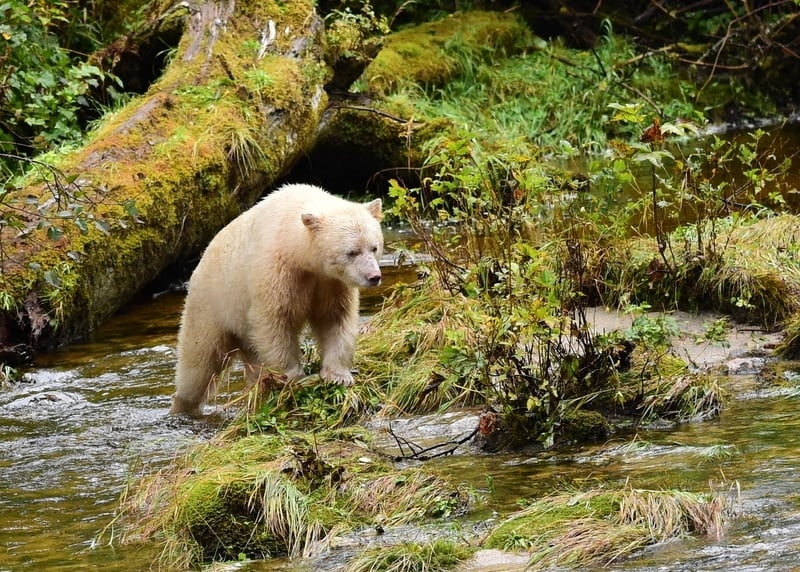
#9:
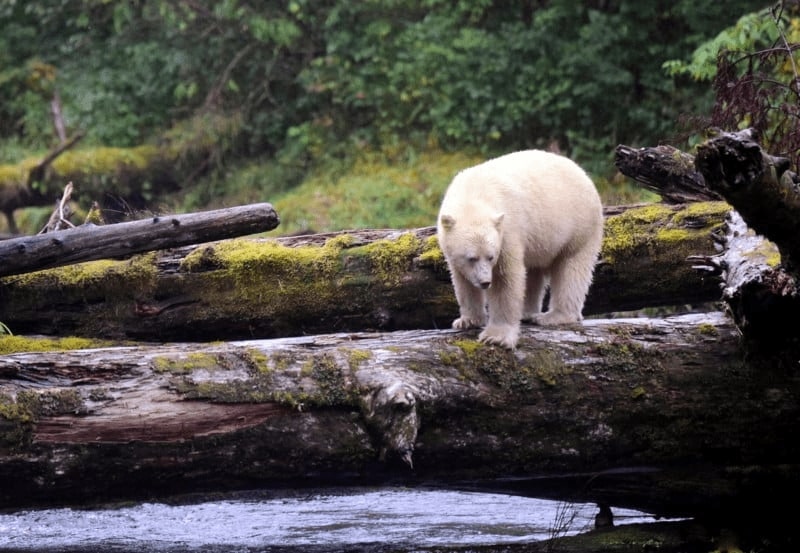
One of their excursions revealed a vivid tapestry of pink salmon in abundance. The spirit bears were extraordinarily adept at selecting female salmon, devouring their valuable spawn while sparing males. Occasionally, a typical black bear made a cameo appearance, but the spirit bear’s inherent ability to blend in with its environment gave it an advantage in its salmon-catching prowess.
#10:

#11:
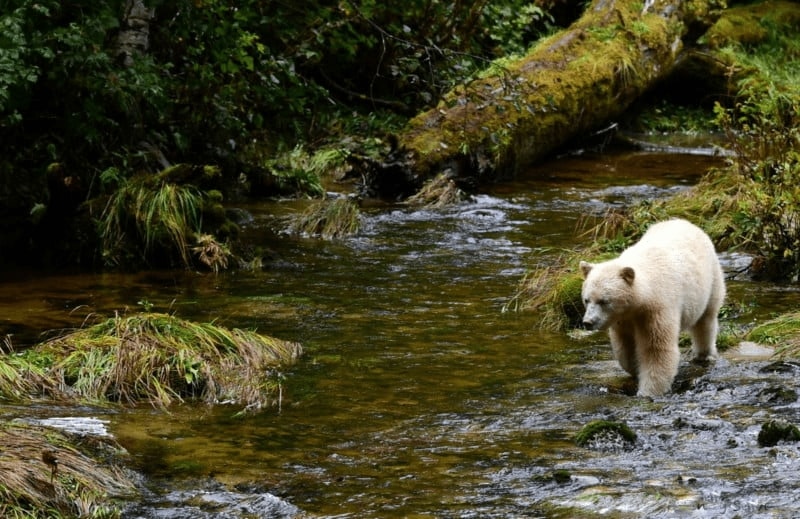
#12:

In contrast to popular belief, the spirit bear is not an albino bear. The prevalent belief is based on their distinctive white fur. However, the skin and irises of these bears are pigmented. The origin of their pristine white fur is a genetic anomaly that inhibits melanin production, the pigment responsible for conventional bears’ dark fur.
#13:

#14:

#15:
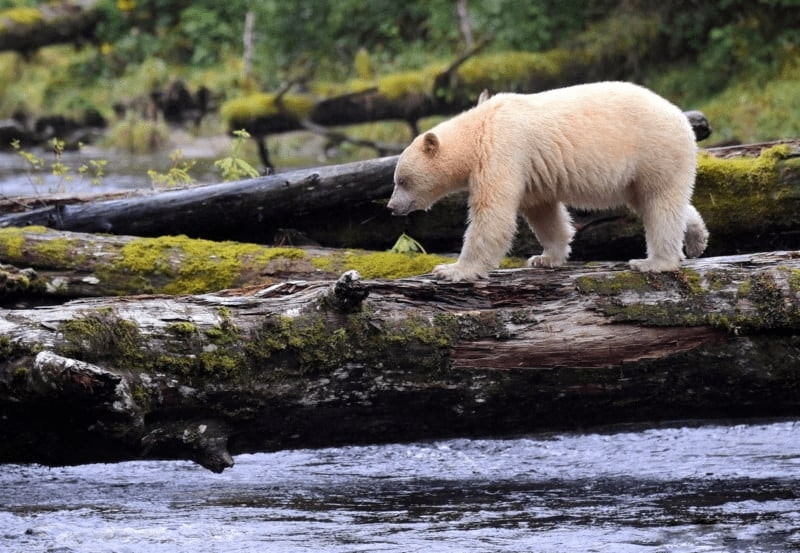
A noteworthy footnote: a lone spirit bear resides in confinement. After being captured as a cub and released three times, the animal displayed an unmistakable propensity to return to human settlements. Consequently, it now resides in the British Columbia Wildlife Park in Kamloops, British Columbia. In the oral traditions of the indigenous communities of western Canada, these extraordinary bears hold immense cultural significance.
#16:

Jenny Stevens’s extraordinary expedition revealed the captivating story of the spirit bear, a species of bear that is exceedingly uncommon. These magnificent white-clad bears are a testament to the natural world’s wonders. As we recognize their significance and value their existence, we play a crucial role in preserving these magnificent creatures for future generations.


